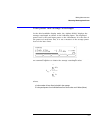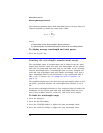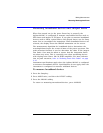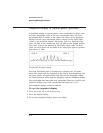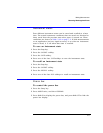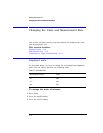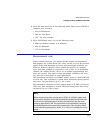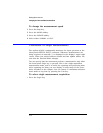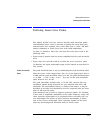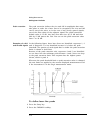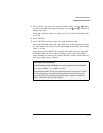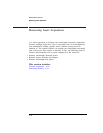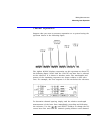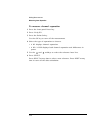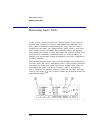
2-15
Making Measurements
Defining Laser-Line Peaks
Defining Laser- Line Peaks
The Agilent 86120C uses two rules to identify valid laser-line peaks.
Understanding these rules is essential to getting the most from your
measurements. For example, these rules allow you to “hide” AM mod-
ulation sidebands or locate laser lines with small amplitudes.
In order to identify a laser line, the laser-line must meet both of the
following rules:
• Power must be greater than the power established by the peak threshold
limit
• Power must rise and then fall by at least the peak excursion value
In addition, the input wavelength range can be limited as described in
this section.
Peak threshold
limit
The peak threshold limit is set by subtracting the peak threshold value
from the power of the largest laser line. So, if the largest laser line is
2 dBm and the peak threshold value is 10 dB, the peak threshold limit
is –8 dBm . You can set the peak threshold
value between 0 to 40 dB.
The peak threshold’s default value is 10 dB. This ensures that any
modulated signals being measured are not confused with their AM
sidebands. For unmodulated lasers, or Fabry-Perot lasers, it may be
desirable to increase this threshold to look for responses that are more
than 10 dB from the peak.
Peak threshold can be used to suppress spurious signals. For example,
a laser that is amplitude modulated in the audio frequency range can
cause spurious wavelengths to be displayed below and above the cor-
rect wavelength. The power of these spurious wavelengths is below
that of the correct wavelength. These spurious signals can be elimi-
nated by decreasing Peak threshold from its Preset value.
8 dBm– 2 dBm 10 dB –=()



